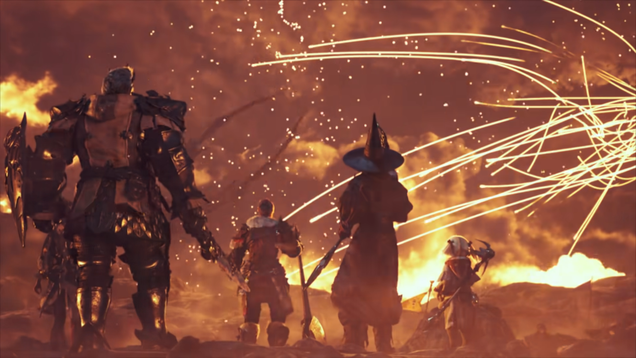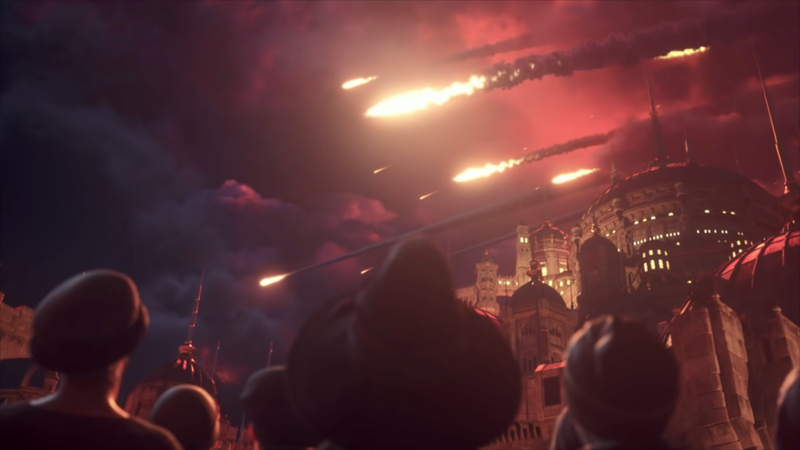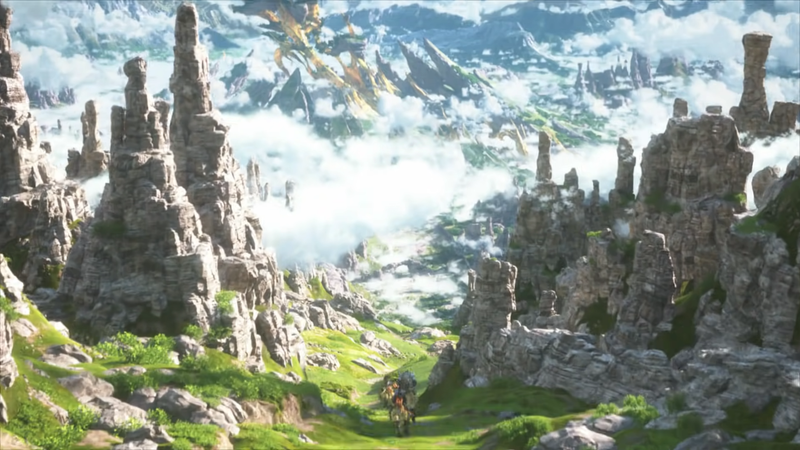

Ten years ago, in a cataclysmic rain of flaring energy, Final Fantasy XIV died. That’s both true in the sense that the land of Eorzea was raked with the almighty megaflare of one of Final Fantasy’s most powerful beings, the dragon Bahamut, and that developer Square Enix shut down the servers of its troubled MMORPG for good.
The launch of Final Fantasy XIV had been an unmitigated disaster, and nearly cratered the studio behind it in the process. But even as players gathered in cities and fields to gaze up at the sky awaiting Bahamut’s reckoning, plans were underway to rehaul the MMORPG entirely, relaunching it as Final Fantasy XIV: A Realm Reborn—a game with the complete opposite story of the original XIV. It was a wild success that is still going strong to this day, and likely for the foreseeable future.
Read more
But what makes XIV 1.0’s shutdown so memorable—beyond the success story it became in A Realm Reborn—is that this was more than the end of one game and the start of another, a sad, quiet shutdown before a vaunted relaunch. Final Fantasy XIV’s inheritors had time to plan the original version’s end and pave the way to their new version, and in doing so created an epic final story for players to witness, one that went on to echo throughout the decade as A Realm Reborn’s long story played out. The decision to not just shutter Final Fantasy XIV but to rebuild it into an entirely new game was made the year before 1.0 would ultimately end, and in the time given, its new producer—Naoki “Yoshi-P” Yoshida, who still helms the current version of the game and is working on Final Fantasy XVI—made the choice to retool 1.0’s original story to tell a tale of apocalyptic proceedings.

The thing about Final Fantasy is that the apocalypse happens all the time. Almost every entry in the game franchise’s history has tackled some sort of potentially world-dooming threat, and its heroes have prevailed, because that’s what Final Fantasy heroes do when they’re not summoning gods or working in the rigorous hair care routines required to look like Kain Highwind or Squall Leonheart. The threat of Meteor in Final Fantasy VII, the rise of Kefka’s godhood in VI after he sundered the world, the battle against Sin in X, time and time again Final Fantasy is a story of myriad warriors and mages coming together to face a fated end and deny it. The end of XIV’s original form was a chance to tell that story where its heroes, the remaining players, did that and lost.
1.0’s end is heralded by a small red moon—the artificial construct Dalamud, summoned by Final Fantasy XIV’s primary villains, the Garlean Empire, in an attempt to devastate the land of Eorzea before its forces swept in and seized the ashes for themselves. As players and the leaders of Eorzea rallied together to fight back against the Garleans, what started as a small red dot in the skies got bigger and clearer as, patch by patch, Final Fantasy XIV went to its end. Even when the story climaxed with the defeat of the Garlean commander, Nael van Darnus, at the players’ hands, they learned that it was a Pyrrhic victory: Dalamud would still fall, and the world would perish beneath it. In the final days and hours of the game, players took part in events to push back against the invading Garlean forces, thrown into disarray by their leader’s death, a sense of dread in the air—and the events kept going. Dalamud kept getting closer. Until, in the final minutes, Dalamud’s fiery visage burned in the skies with echoes of strange, ethereal music, and Final Fantasy XIV died with one last cutscene:
FINAL FANTASY XIV: THE FINAL 11 MINUTES *End Of Eorzea*
“End of Eorzea” is a six-minute epic almost unlike anything Final Fantasy XIV had seen, as the forces of Eorzea, heroes and grunts alike, clashed with the Garleans. Dalamud’s true purpose was revealed—not a moon, but an ancient prison, housing the almighty primal dragon Bahamut. Eorzea’s armies fall to Garlean arms, our heroes—the same heroes that had heralded XIV’s arrival in its original cinematic trailer beaten back. At the final minute, an act of prayer by your closest allies in XIV, a group known as the Circle of Knowing, attempts to magically restrain Bahamut, only to dramatically fail, and be rewarded with the beast unleashing its most powerful attack from the series, Megaflare—only this time not wielded as a player fantasy, but a horror to carve fire across the world they had failed to protect.
But of course, Final Fantasy XIV wasn’t ending forever. In the final moments, the Circle of Knowing’s leader, Louisoix Leveilleur, whisks the heroes away to survive the devastation Bahamut brings, so they can re-emerge in the remade world for A Realm Reborn. But the legacy of 1.0 ending like it did didn’t just linger in that metatexual premise that players went on even after the world itself was razed to the ground. The choice to rebuild Eorzea from apocalypse was woven into the story of its rebirth, its ramifications echoing not just across A Realm Reborn, but every expansion the revived game has had in the last nine years, as Final Fantasy XIV kicked off a whirlwind redemption arc to make it one of the crown jewels of Square Enix’s library. The song that plays to bid farewell to 1.0, “Answers”—composed by Final Fantasy legend Nobuo Uematsu—even became a vital part of the most recent of those expansions, Endwalker, framing a similarly apocalyptic narrative where the heroes of the remade Eorzea faced an almighty doom, only this time they defeated it, saving not just the realm but the entire world. A justice for the world they had failed to protect all those years ago.

One of the most compelling, endearing, and perhaps daunting aspects of Final Fantasy XIV is that is an ongoing story, one that deals with highs and lows of stakes and adventure as story cycles wax and wane, and one that is steeped in a kind of history almost unprecedented in the world of games beyond it. Its players have taken their character on a journey that has been going on for almost a decade, and some of them—players of the original XIV who brought their characters over—for even longer. Making the death and rebirth of the game a fundamental part of that base story, and having it echo all the way up to XIV’s latest apocalyptic event, is a crucial part of what makes its success story so miraculous in the first place. Not many games get the second chance Final Fantasy XIV got, whether in the real world or in the land of Eorzea itself, but taking that story of failure and weaving it into one of redemption is a fascinating part of what makes it such a compelling game in the first place.
Want more io9 news? Check out when to expect the latest Marvel, Star Wars, and Star Trek releases, what’s next for the DC Universe on film and TV, and everything you need to know about James Cameron’s Avatar: The Way of Water.
More from Gizmodo
Sign up for Gizmodo’s Newsletter. For the latest news, Facebook, Twitter and Instagram.